What a time to be in Paris!
Here is a look at some of the great art that was in Paris in the 1870s. As I was reading Naked Came I by David Weiss for my recent post on Auguste Rodin I realized that a lot of my favorite artists were in Paris at the same time and knew each other.
1870
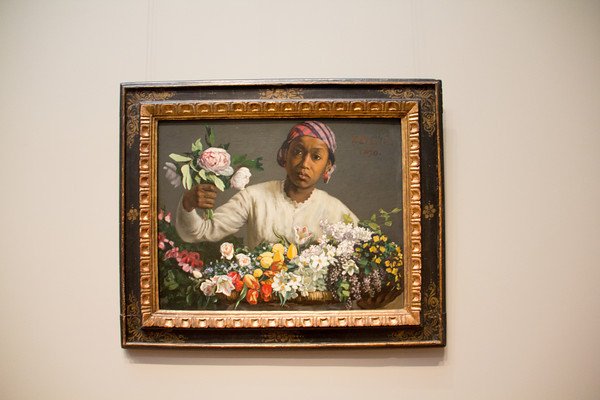
Negro Girl with Peonies, 1870, Frederic Bazille
National Gallery of Art, DC
These are two of my favorite paintings from this time period. When I go to the National Gallery of Art in DC, as I do each year, I always go and see these two paintings.
I think I am drawn to this painting because of the emotion of the woman and the emotion I feel knowing that this great artist, Fredric Bazille, was killed in the Franco-Prussian War in 1870, the same year of this painting.
Berthe Morisot showed the painting to the right in the first impressionist exhibition in 1874. She was married to Eugene Manet, the brother of Edouard Manet (whose work we will see below).
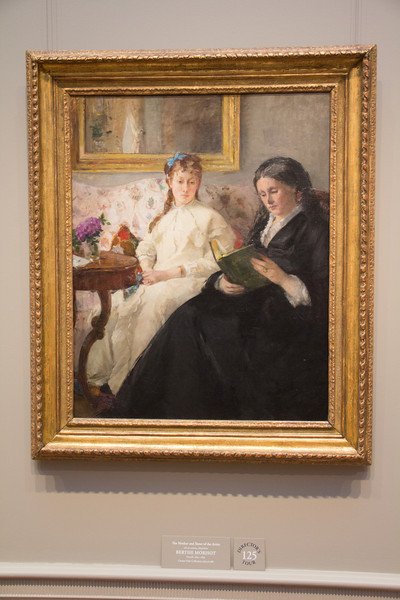
The Mother and Sister of the Artist
1869-1870, Berthe Morisot
National Gallery of Art, DC
After the Franco-Prussian War Victor Hugo returned to France as a hero.
During his time in exile (1855-1870) he wrote his most famous work Les Miserables (1862) shown on the right. This is my copy and I consider it a amazing book about love... on so many levels.
Hugo was elected to the senate in 1870 and in 1885 he died at the age of 83. His funeral was attended by over two million people and he is buried in the Pantheon. 1
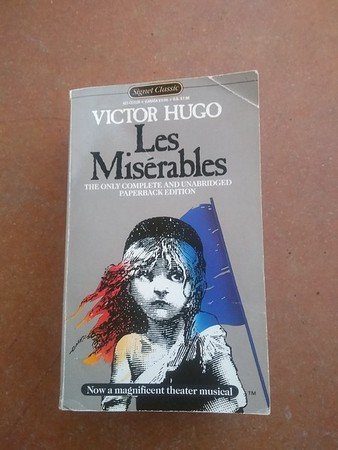
Les Miserables, 1862, Victor Hugo

1872

Pont Neuf, 1872, Pierre-Auguste Renoir
National Gallery of Art, DC
Forgive the picture that is a bit crooked, when I took this picture in 2016 little did I know that I would be using it for my art blog a couple of years later.
I like this painting for it's impressionist qualities of light, color and depicting daily life.
During a tour of the National Gallery of Art in DC I hear a a great story about this painting. It is told that the artist's younger brother Edmond Renior would periodically delay passerby long enough for Pierre-August to record their appearance as he sat in the upper floor of a cafe over looking the bride. Renior even recorded Edmond twice. He is the one with walking stick and a straw boater on. 2

1873
This was one hundred years before I was born!
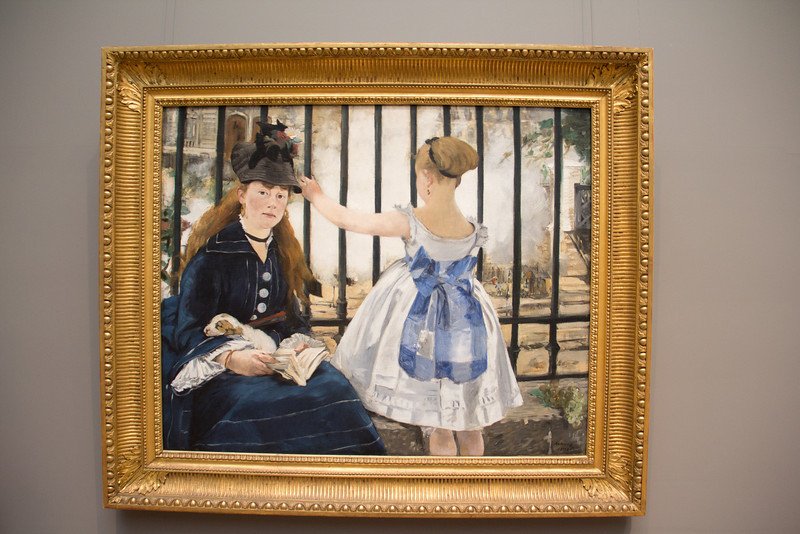
The Railway, 1873, Edouard Manet
National Gallery of Art, DC
Edouard Manet is one of my favorite artists during this time. He is so interesting in that he was a contemporary and friends with many of the Impressionist painters yet he never joined that movement.
The Railway is a interesting subject as at this time Paris was undergoing an urban renewal program, of which railroads were a centerpiece. 3
The model is Victorine Meurent, Manet's muse for both Olymipa and Dejeuner sur I'Herbe. 4
Another interesting thing about Manet is that his signature color is black and it can be found in just about all of his paintings.
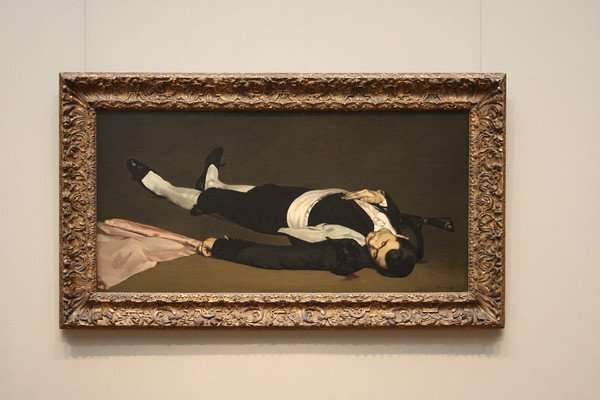 |  |  |
|---|

1874

The Monet Family in Their Garden at Argenteuil,
1874, Edouard Manet
Metropolitan Museum of Art, New York City
From the MET's description of this painting:
In July and August 1874 Manet vacationed at his family’s house in Gennevilliers, just across the Seine from Monet at Argenteuil. The two painters saw each other often that summer, and on a number of occasions they were joined by Renoir. While Manet was painting this picture of Monet with his wife Camille and their son Jean, Monet painted Manet at his easel (location unknown). Renoir, who arrived just as Manet was beginning to work, borrowed paint, brushes, and canvas, positioned himself next to Manet, and painted Madame Monet and Her Son. 6
What a great time for these three artists to be painting together and each other!

1875

Woman with a Parasol - Madame Monet and Her Son,
1875, Claude Monet
National Gallery of Art, DC

Beautiful detail of Woman with a Parasol
Claude Monet was the founder of the French Impressionist movement and it was his painting Impression, Sunrise that gave the movement its name. He painted in "plein air" as seen in the painting above with his wife and son in the field.

1876
1780-1910 was the Romantic period for music.

Les Éolides, César Franck, 1876
Cesar was a composer, pianist, organist and music teacher. 5
Feel free to listen to this beautiful piece as you read the post.

1877
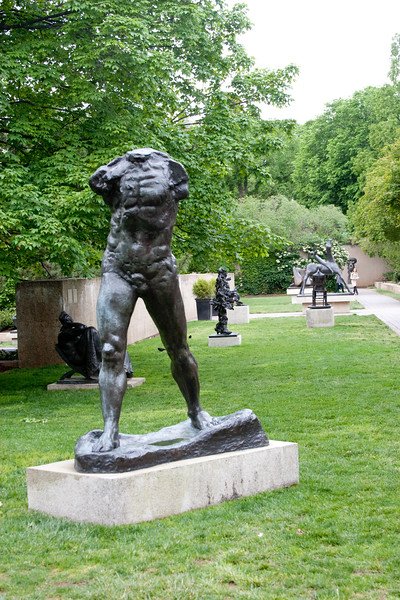
Walking man, 1877-1878, Auguste Rodin
Hirshorn Gallery Sculpture Garden, DC
After making Age of Bronze Rodin was accused of modeling from life. In response to this and to allow his work in the Paris Salon he sculpted Walking Man in front of a jury of five men. Below is an excerpt from Naked Came I on the experience of sculpting Walking Man.
"For the first time in years Auguste was improvising. He imagined Lecoq standing before him, but Lecoq was too old, Boucher moved well and easily but he wasn't dramatic, then there was that Italian, Peppino, so completely without awkwardness, with a magnificent exciting stride. He began to model now, feeling sure, seeing Peppino's walk with a clear and rational mind although years had intervened. He mounted the torso on the armature, and as the figure became real he felt in the presence of God. He made the trunk wider, stronger, more muscular, but still, at the moment, without sex.
Boucher marveled at the simplicity with which he worked, as if the structure of this figure welled up from Rodin's imagination. There was nothing abstract about this body; the concrete reality was individual. He did not use too much clay, as did most sculptors. He worked quietly, calmly, swiftly, with an ease of expression that struck Boucher as remarkable. He dominated his material. " 7

1878

Little Dancer Aged Fourteen, 1878-1881, Edgar Degas
National Gallery of Art, DC
This bronze by Degas was debuted at the Sixth Impressionist Exhibition in 1881.
It is made with pigmented beeswax, clay, metal armature, rope, paintbrushes, human hair, silk and linen ribbon, cotton faille bodice, cotton and silk tutu, linen slippers, on wooden base.
I have walked past this sculpture many times and not realized how revolutionary it is. From the National of Gallery of Art page:
"In the context of the evolution of sculpture, the Little Dancer is a groundbreaking work of art. The liberating idea that any medium or technique necessary to convey the desired effect is fair game may be traced back to this sculpture. Degas represented a working–class subject, though not an everyday one, with both realism and compassion, but without moralizing. In so doing, he captured with brilliant simplicity the difficult tension between art and life." 8

1879

Oarsmen at Chatou, 1879, Pierre-Auguste Renoir
National Gallery of Art, DC

Beautiful detail of Oarsmen at Chatou

Did you enjoy this walk through the 1870s Paris with me? It has been a wonderful journey and I look forward to introducing you to more artists and time periods in the future.
Sources: 1, 2,3, 4, 5, 6, 7, 8
Art Talk Series Highlights
Art Talk: Introduction has a link to all Art Talk posts
Art Talk: Emotion In Bronze
Art Talk: Moore in America
Art Talk: Art Tells Our Story
Art Talk: Highlight tour of the MET
Art Talk: Auguste Rodin
